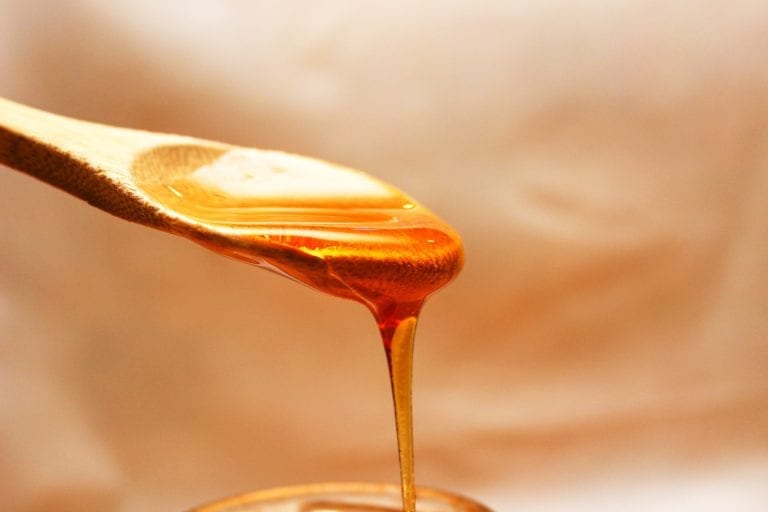
During the summer, my 8-year-old cut his foot on a rock while at the beach. It wasn’t bad enough to need stitches but uncomfortable to walk on. He would gingerly walk around the house and preferred to put most of his weight on the side of his foot. While this worked for a while, his posture was wonky which caused his back to hurt. It was one discomfort after another, but thank goodness he’s young and his body heals easily! 🙂
Luckily, soon after, I bumped into a friend. She asked why he was limping and I told her about the cut. She has 4 kids and is no stranger to gashes, burns, road rash and broken bones. In fact, I seek her out for minor injury advise on a lot of things before heading to a physician.
So what was her suggestion for the cut? …. HONEY!
I’ll be honest, I’m not a fan of over-the-counter cut/scrape creams. Do they work? Sure. But what’s really in them? What are all those 10-letter words that I can’t pronounce? And now I’m supposed to slather it on my son’s foot? No thanks! So when she suggested honey, I was pumped to try it! And after looking at his foot, my friend assured me that it would be the prefect remedy and would help to heal his cut.
It’s not that I didn’t believe her, like I said earlier, she’s my “go-to” for advice! But I wanted to read about how it’s possible that honey can be so helpful for wound healing – it sounded too good to be true!
So here’s what I learned from healthline.com:
- Honey has a specific pH that promotes healing (between 3.2 and 4.5). When applied to wounds, the acidic pH encourages the blood to release oxygen, which is important to wound healing. An acidic pH also reduces the presence of substances called proteases that impair the wound healing process.
- The sugar naturally present in honey has the effect of drawing water out of damaged tissues (known as an osmotic effect). This reduces swelling and encourages the flow of lymph to heal the wound. Sugar also draws water out of bacterial cells, which can help keep them from multiplying.
- Honey has been shown to have an antibacterial effect on bacteria commonly present in wounds.
And here are the suggested ways to apply honey on a wound:
- Start with clean hands and applicators, such as sterile gauze and cotton tips.
- Apply the honey to a dressing first, then apply the dressing to the skin. This helps to cut down on the messiness of honey when applied directly to the skin.
- Place a clean, dry dressing over the honey. This can be sterile gauze pads or an adhesive bandage.
- Replace the dressing when drainage from the wound saturates the dressing. As honey starts to heal the wound, the dressing changes will likely be less frequent.
- Wash your hands after dressing the wound.
Why aren’t these natural ways of healing more alive in our consciousness?
Good Question! That’s a topic for another blog.
In the meantime, let’s give some gratitude to Mother Earth for her incredible healing powers!

